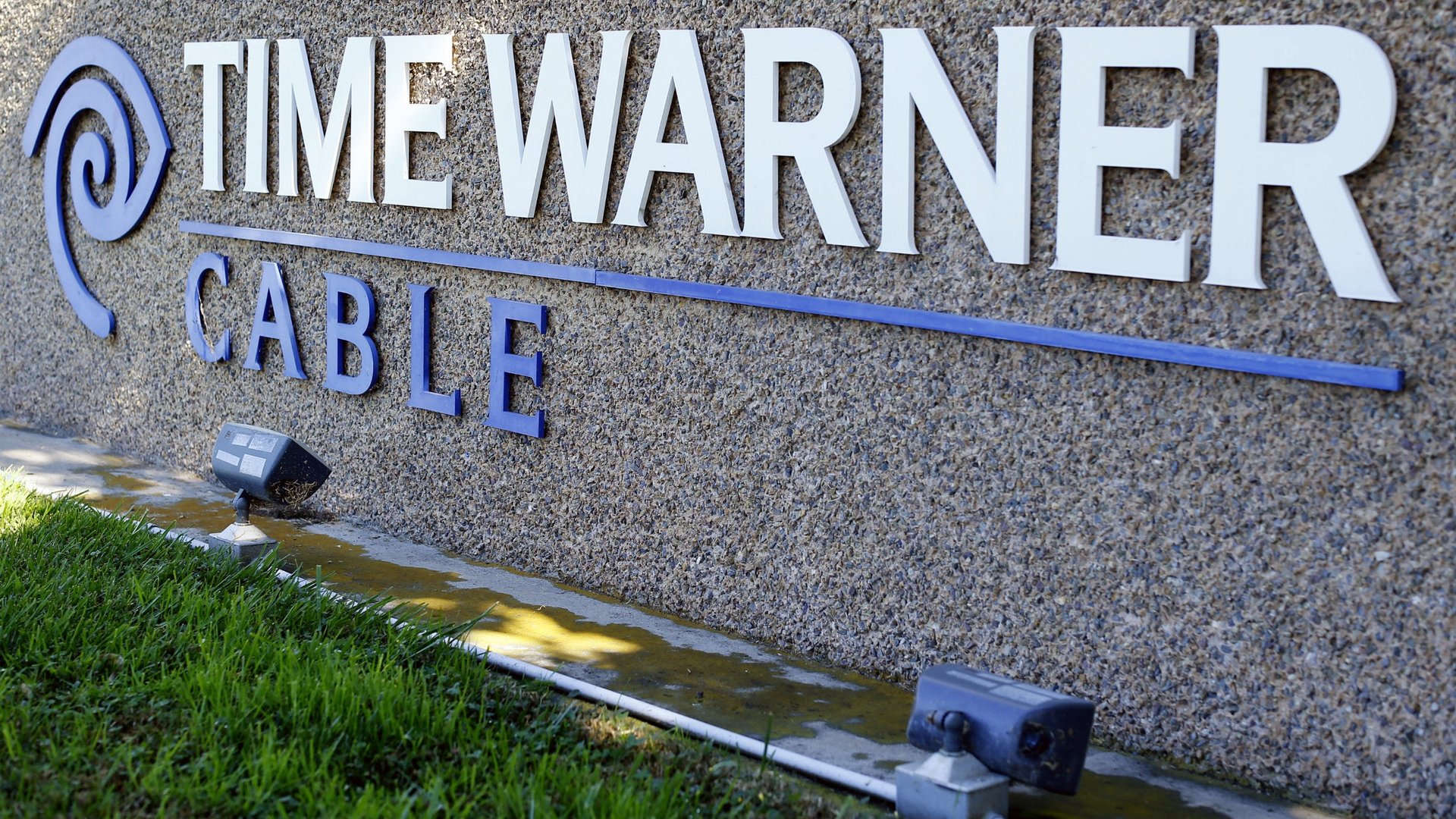Why everyone wants to buy America’s least liked cable company
Time Warner Cable is America’s least liked cable provider, and its second least liked internet service provider, in terms of customer satisfaction. It’s bearing the brunt of the cord-cutting phenomenon, hemorrhaging customers faster than anyone else, and increasingly dependent on annoying fees to bolster its bottom line.


Time Warner Cable is America’s least liked cable provider, and its second least liked internet service provider, in terms of customer satisfaction. It’s bearing the brunt of the cord-cutting phenomenon, hemorrhaging customers faster than anyone else, and increasingly dependent on annoying fees to bolster its bottom line.
Yet the company has become the crown jewel in a high-stakes battle for the future of America’s cable and broadband industries. It’s being circled by rival cable companies including Charter Communications and Comcast. There’s even speculation that, to avoid antitrust concerns, it could be broken up into parts for the rest of the industry to feast on.
Why so much interest in a poorly performing business that isn’t very popular with its own customers? The reason is simple: the fragmented nature of America’s cable industry is basically unsustainable, and Time Warner Cable has considerable strategic value.
Currently, America’s cable companies are a series of regional pseudo-monopolies—a legacy of the way cable TV licenses were awarded in the 1950s and 1960s. Time Warner Cable has a big presence in key markets like New York City and Los Angeles. Comcast, the industry’s biggest player, controls cities like Boston, Philadelphia, Washington DC, Chicago and San Francisco. Cox Communications, Charter Communications and Cablevision, the next three biggest players, each have their own regional fiefdoms.
This industry structure worked fine in the days when the only way to get (or provide) access to TV content that wasn’t broadcast over the public airwaves was via cable. But in the internet age, everyone has a content smorgasboard at their fingertips. As a result, Americans are abandoning their expensive pay TV subscriptions in droves, favoring cheaper internet streaming services like Netflix and Hulu, while new services like Aereo are springing up.
Cutting the cord obviously still requires broadband internet access—a service cable companies can and do provide. But because of the cable industry’s fragmented nature, they have relatively small bases of subscribers compared with Netflix, telecom companies AT&T and Verizon—who now have pay TV offerings of their own—and even satellite providers like DirecTV. (For instance, Comcast has some 21.5 million subscribers and shrinking; Netflix has 31.1 million and growing.) This means they have less leverage in negotiations with film studios and broadcast networks for access to programming.
This impasse leads to disputes, and blackouts, as was the case with Time Warner Cable and CBS during the American summer. Customers almost always blame the cable companies (to whom they pay the fees) for these disputes, even if the networks deserve some of the blame.
So another cable firm that buys up Time Warner Cable would get greater scale and more negotiating power against the film studios and networks. If it could buy programming for less and pass on the savings to consumers, fewer of them might cut the cord—in theory at least. And even if the future for the cable industry is broadband only, spreading the costs of expensive network upgrades across more users also makes economic sense.
In short, consolidation in big cable is inevitable. And Time Warner Cable’s struggles mean it’s more likely to be prey than predator.